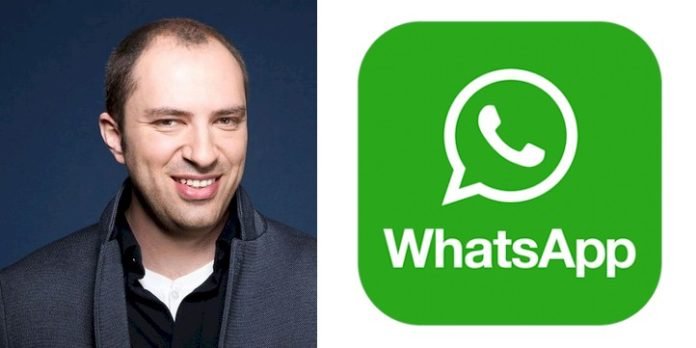The Whatsapp Logo and the history behind the business.
WhatsApp, one of the most popular messaging platforms in the age of the internet, is, without a doubt, a modern-day success story. From humble beginnings to widespread adaptation, the WhatsApp Logo history and the company is the quintessential example of a small tech startup turned wildly successful company. In this article, we’ll look at how WhatsApp got its start and how its recognizable logo played a role in its success.
History of Whatsapp
Brian Acton and Jan Koum, the founders of WhatsApp, both worked as employees of Yahoo! before leaving the company. Shortly after that, they both applied for jobs at Facebook—jobs that had they been accepted to would have likely left them unable to start WhatsApp—but were turned down. At the time, Koum was living off his savings from Yahoo!, with little direction as to where his next career path would take him. In 2009, though, after purchasing an iPhone, Koum had the vision to see that an entire industry was about to form based around mobile apps. Looking to capitalize on this up-and-coming industry, Koum began to explore the possibility of creating an app that would let mobile users better interact and engage with their friends, family, and business contacts. Teaming up with Brian Acton, Koum managed to persuade five associates from Yahoo! to fund the app with $250,000, and in 2009 WhatsApp was launched.
It was a bit of a rocky start for WhatsApp, though. After numerous crashes and failures, Koum grew frustrated with the app’s development and reportedly considered giving it up entirely. Acton encouraged Koum to stick it out “a few more months” each time the duo hit a setback.
Luckily for both of them, the duo did indeed stick it out and saw the app through to its eventual success. By February of 2013, WhatsApp boasted 50 staff members and 200 million users. Shortly after that, Facebook bought out the app for a staggering $19 billion—a number that stands as the largest acquisition in the world to date.
According to the company’s blog, WhatsApp still logs over 100 million voice calls a day. There’s no arguing WhatsApp’s success with usage numbers like these combined with the app’s historic buyout. But what role did the WhatsApp logo play in the app’s success, and what is the history of this iconic design?
The WhatsApp Logo

Not a lot is known about the origins of the WhatsApp logo. The design appears to have been around since the launch of the app itself, suggesting that it was designed by Koum and Acton themselves during the initial stages of the app’s development and launch. Of course, the logo’s design could have easily been outsourced to a third-party designer as well—the programming of the app itself was outsourced, after all.
At the end of the day, though, we know that the Whats App logo’s basic design hasn’t changed over the years, even after the company itself changed hands. This speaks to the design’s longevity and effectiveness and is a testament to the fact that a logo doesn’t necessarily have to have a long and interesting history to serve its purpose just fine.
Design Elements of the Whats App Logo
The WhatsApp logo and Icon features a few interesting design elements that can clearly communicate the app’s function within a relatively simplistic design. WhatsApp serves as a platform for instant messaging and audio/video calls, and the logo is needed to effectively communicate those functions. To do this, two separate elements of the design were used.
The first of these elements is a text bubble. Since instant messaging started, the text bubble has been the most common way to symbolize a sent or received message. Even today, almost every text message received is displayed in one of these text bubbles. Text bubbles indicating received messages have a “tail” pointing to the left, while text bubbles indicating sent messages have a tail that points to the right. By incorporating a text bubble with a left-pointing tail into their logo, Whats App can signify that they are a messaging app while subtly tapping into the excitement people experience when they see that they have received a message.
The designer of the WhatsApp logo placed a telephone within the text bubble to communicate the app’s secondary function (voice and video calls). One interesting thing to note is that even though WhatsApp is an app designed for modern mobile phones, the inner part of the app’s logo features an older, landline phone. Since the only purpose of a landline phone is to make calls instead of a smartphone with hundreds of functions, the landline phone in the Whats App logo more effectively communicates the app’s function.
The Popularity of the Whatsapp Logo
Because people prefer for their mobile phones to have a neatly organized and aesthetically pleasing user interface, mobile apps need to have a crisp, attractive logo. With over 1 billion users as of 2016, it is safe to say that people are entirely satisfied with how the WhatsApp logo looks on their phones.
In this way, the WhatsApp logo fulfills one of a mobile app logo’s primary functions—do no damage. While an app’s logo must be recognizable and unique, it is equally important that the logo itself doesn’t give a user any reason to remove the app from their home page or, even worse, send it to the trash bin. The fact that almost one-seventh of the world’s population uses WhatsApp is a testament to their logo’s likability and effectiveness as part of a phone’s user interface.
Due to these factors, designing a mobile app’s logo comes with its own set of challenges and goals. The WhatsApp logo’s designers hit it out of the park, though, and the WhatsApp logo serves as a great example of what to look for in-app logo design.










